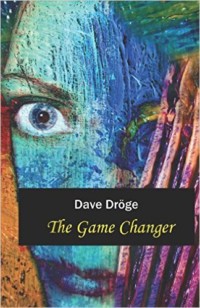Title: The Game Changer
Author: Dave Dröge
Publisher: MVO Productions
ISBN: 978-1-5190-8808-6
Pages: 384
Genre: Fiction
Reviewed by: J.W. Bankston
Buy on Amazon
Pacific Book Review
Two Freuds haunt “The Game Changer.” Early on in the novel, the protagonist’s daughter poses for an artist copying Lucian Freud. It is the painter’s grandfather, however, who inhabits this new English translation of Dutch novelist Dave Dröge’s book. The main character’s response to his offspring’s artistic decisions recalls many of Sigmund Freud’s theories.
Set in Rotterdam, a city often overshadowed by the larger and more famous Amsterdam, the story makes fine use of its cafes and “working girls.” Still, it is Rotterdam’s art scene that forms the novel’s spine. Although the first pages of “The Game Changer” convinced me I was reading a book about a museum heist, the novel details a theft of an entirely different sort. Instead, the book is about the theft of innocence. Ironically, it is the father’s innocent perception of his daughter which is stolen.
Multiple storylines populate this complex novel. The most compelling is the tension between protagonist, Henk van Wijnen-Swarttouw, and his daughter, Julia. After graduating from high school, she doesn’t spend her gap year backpacking. Instead, Henk (a successful entrepreneur and physician) provides access to his gallery. At her sabbatical’s conclusion, he expects her to pursue a medical career. Young Julia gains notice as artists have throughout history –– with controversy. Unfortunately for Henk, his daughter displays herself both figuratively and literally in his gallery’s front window.
Besides Lucian Freud, Julia draws inspiration from a number of lesser known artists –– helpfully detailed on the author’s website. Hesther Scheurwater, for instance, is renowned for crotch-focused selfies. Despite being displayed in major museums and galleries, her work is most definitely Not Suitable for Work. These disturbing images of Henk’s barely legal daughter provoke responses shifting from paternal protection to something more twisted. Indeed, his fascination with Julia’s work is a driving force. As the novel progresses, he employs young women who pretend to ignore him while focusing their attention on their phones and on other men. It is up to the reader to decide if Julia’s exhibitions are necessary to keep Henk’s company from polluting the environment.
For those who wonder why translators are sometimes as feted and famous as a book’s creators, this novel provides an answer. Dröge’s translation does a disservice to his own novel. He often chooses obscure or unwieldy words when simple ones will suffice. The idiosyncratic word choices resemble a story written in dialect. After a few pages, most readers will uncover a sort of rhythm to Dröge’s words. Despite these challenges, the novel is such an interesting and unique example of Dutch existentialism that it’s well worth the effort.


